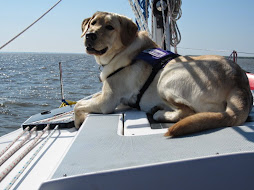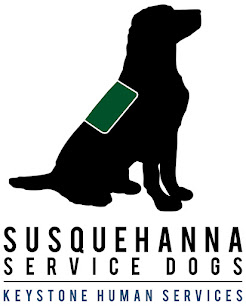We received a question on our Facebook page asking fear and stress in dogs, and we think this is the perfect opportunity to talk about reading your dog and knowing your dog's stress signals.
Do you know what your dog is telling you? Dogs speak with their bodies, and they're constantly telling us things. How well are you listening?
When training your dog or even when you're out for a walk or hanging out in the backyard, it's important to pay attention to your dog's body language so you know whether your dog is relaxed and happy or stressed.
As humans, we're very familiar with stress; we experience it several times a day, between traffic, deadlines, work, relationships, etc. Dogs are no different, although their stressors are very different from ours. Service dogs typically experience more stress than pets because they are being asked to enter new environments and perform challenging, specialized tasks.
What is stress? It's anything that throws the body out of balance. Causes of stress include a sudden increase or decrease in exercise, changes in the environment, pain or illness and unfamiliar animals. There are several levels of stress, and dogs display different behaviors and body language for each level.
Level 1 Stress
When a dog experiences level 1 stress, which is a low level of stress, the dog may try to avoid the thing that is causing stress. The dog may also lick his nose or lips, sniff, scratch, yawn, play bow, shake or paw at things.
What should you do if you see your dog doing these stress signs? You can give your dog more treats so they associate good things with the stressor. You can put some distance between your dog and the stressor or even remove your dog to a quiet place. This will help the dog calm down and help the dog trust you because he will learn that you will take care of him and remove him from scary situations.
Level 2 Stress
When a dog's stress level goes up, he may start panting, drooling, or even vomiting. He may get dandruff and bloodshot eyes, and his muscles will be very tense. He could also become extremely active or restless, drink excessively and develop sweaty paws.
If you notice any of these stress signs in your dog, you should remove your dog from the situation. Give your dog a chance to relax. This may mean going outside to sniff for a while or maybe you give the dog a puppy massage. You will need to use your judgment about whether your dog will be able to handle going back into the stressful situation. It may be time to end your training session.
Training
Stressors can change, so situations that didn't bother a dog when they were 3 months old may suddenly cause them stress when they're 8 months old. However, with training, you can help your dog realize that they don't need to be worried or fearful in that situation.
For example, let's say that a dog is afraid of people holding umbrellas. Whenever they see someone with an umbrella, they start barking and lunging. However, with training, the dog can learn that people with umbrellas are not scary and the dog will be able to remain calm and even interact with people with umbrellas.
One way to train it
If a dog finds something very stressful, such as people with umbrellas, we sometimes use constructional aggression treatment (CAT). This type of training uses negative reinforcement, meaning a behavior is reinforced by the removal of the aversive or stressor.
If the dog is barking or lunging at something, most handlers will remove the dog from the situation, which means that the dog learns that by barking and jumping, they don't have to stay in the stressful situation. When we use CAT, we're teaching the dog that the scary thing will go away if they give an appropriate alternative behavior, such as looking at their handler.
We'll use the example of the person with an umbrella to explain the training. We start this training by having the dog in a fixed spot. The dog can have toys, water, etc. around it. However, it's very important that you don't use any food or the clicker during CAT training because we want the dog to generalize the behavior regardless of whether their handler is wearing the treat pouch.
Next, we have a person with an umbrella approach the dog to the point where the dog notices it. We don't want the person to get so close that the dog starts barking or lunging. As soon as the dog sees the person and tenses up, the person stops. This person with the umbrella will stay in that spot until the dog gives an appropriate alternative behaviors, such as looking away, blinking, making eye contact with their handler, etc. As soon as the dog does that, the person with the umbrella moves away again to the point where the dog isn't bothered at all by him.
Training continues in this manner with the person moving a little bit closer. The dog eventually learns that they can make the scary thing (in this example, the person with the umbrella) go away by being calm around it.
At some point the dog may switch to being interested in the person with the umbrella. For example, the dog may sniff the air when the person comes forward. In this case, the person would leave as soon as the dog sniffs the air.
Eventually, the dog will realize that people with umbrellas aren't anything to be afraid of, and they should be able to remain calm and relaxed whenever they see a person with an umbrella.
During this whole process, you will need to pay very close attention to your dog's body language. You will be looking for very small signals from your dog - a head movement, a blink, a deep breath, etc. It takes patience, but if you pay attention to your dog, he will soon be able to remain calm and relaxed in stressful situations.






























